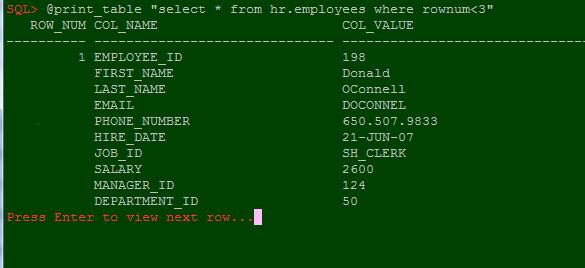Over the years, updates can cause rows to become highly fragmented sapping performance on Exadata table scans.
The offload server and hence SmartScan get data to process 1 MB at a time. Because of this, SmartScan is only able to process row pieces that are available in the current 1 MB chunk that it processes at a time. Unlike RDBMS table scans, SmartScan is not able to initiate disk I/Os to retrieve further row pieces and, even if it could, it in unlikely that they would be present on the same cell. When SmartScan finds it needs a row for a projected column that is not present in the blocks available to it, it will apply predicate on the row pieces it does have but if those predicate pass, it has to return the row unprocessed for the RDBMS to fetch the missing row pieces from the buffer cache.
Continue reading


